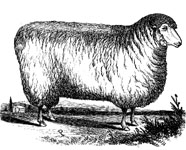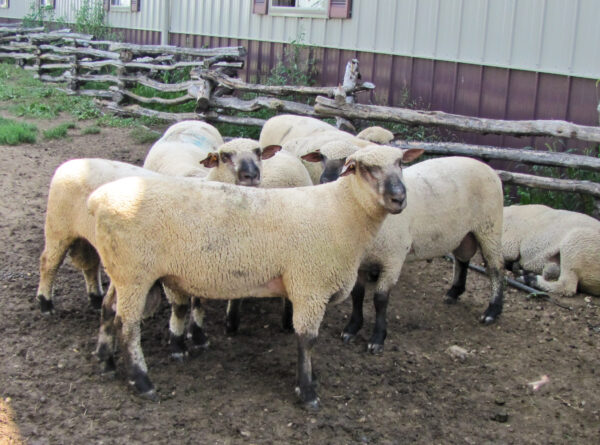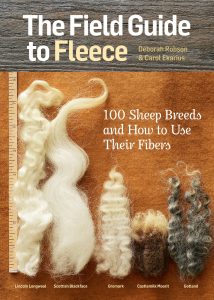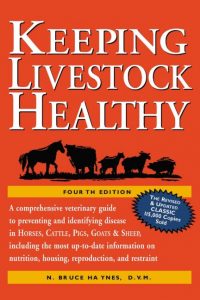
Breed Facts
Status:
Watch
Use:
Meat, Wool, Possibly Milk
Adult Weight:
Rams: 225-250 lbs. Ewes: 150-180 lbs.
Temperament:
Docile, Calm
Experience Level:
Novice – Intermediate
Notes:
Good choice for youth projects; can also make good pets
SHROPSHIRE SHEEP
The Shropshire is a member of the Downs family of sheep and one of the few blackfaced sheep on the Livestock Conservancy Conservation Priority List (CPL).
This breed came from the Shropshire Downs of England. Black-faced sheep were described in this region as far back as 1341. In 1792, the Royal Agricultural society reported about 10,000 native “Morse Common” sheep in this area. These were small, horned sheep described as “the pride and boast of Shropshire”, having black, brown, or spotted faces and a superior quality of wool. Other breeds were crossed with these native sheep to develop the Shropshire breed. Some sources state the Southdown genetics helped remove their horns, and Cotswold and Leicester improved wool length and amount. The breed received the name of “Shropshire” in 1848, and were recognized by the Royal Agricultural Society in 1859 as a distinct breed.
In 1855, the first American importation was made into Virginia. Because of the quality of these sheep, there were frequent and sometimes large importations over the next thirty years. The American Record Association, now the American Shropshire Registry, was founded in 1884.
Until the 1930s, Shropshires were a very popular and influential breed in the US, especially in the northern tier states. In the 1930’s, the breed was described as having excellent fleece, good fleshing, and great prolificacy, but only a medium-good constitution. The breed standard called for wool covering the head, shanks, and hind legs down to the toes and for heavy facial wool. By the late 1930’s, “wool blinding” was recognized (wool grows over the sheep’s eyes causing them to become blind), so breeders began to select for taller, open-faced sheep. Imports of additional Shropshires from England accelerated this selection in the 1950s-60s.
The modern Shropshire is a useful and productive dual-purpose breed. They are medium-sized sheep, with an average ewe size of 150-180 lbs. and rams 225-250 lbs. They have white body wool over cherry-colored skin, and a dark brown-to-black face and legs. Their face is mostly free from wool as are their legs from their knees and hocks down. They have a straight or slightly dished face and rams have a strong, short, muscular neck. They have short ears of moderate thickness set perpendicular to their head and the same color as their face and legs. They are a polled breed.
Ewes are attentive mothers, can produce 1-2 lambs per year, and are known for easy lambing. Shropshire wool has a fiber diameter of 24.5-33 microns and a minimum staple length of 2.5-4 inches (6-10 cm). Like all the downs sheep, this medium-grade wool has a springy quality that makes it perfect for hardwearing items such as hats, mittens, and socks.
They are feed-efficient, easy keepers, and gain weight well. They are generally a calm breed and are a good choice for youth projects due to their gentle disposition. Some can also make good pets. Shropshires are considered a dual-purpose breed but are worthy of consideration for milking as well. For many years Annette Menhennett of Pennsylvania operated a very successful cheesemaking operation in Pennsylvania using milk from her Shropshire sheep.They have also found a niche in controlling undergrowth in vineyards and orchards as they are able to graze without damaging trees. They thrive in ordinary pasture and require little supplementation, but care should be taken not to overfeed them.
This versatile breed is worth your consideration if you are looking for a multi-use sheep breed.
Did you know:
Membership dollars and charitable gifts provide LOTS of free heritage breed resources like archived Facebook chats, microgrants, webinars, book downloads, and charts for comparing breed attributes. Staff members also answer phone calls and emails every day. These and many more services are designed to graduate more breeds off the Conservation Priority List. Thank you for investing in our ability to serve the heritage breeds community with free resources!
You may be interested in…

Breed Facts
Status:
Watch
Use:
Dual
Adult Weight:
150 – 250 lbs
Temperament:
Docile
Experience Level:
Novice – Intermediate
Notes:
Dual purpose breed that can also be considered for milk production
You may be interested in…




